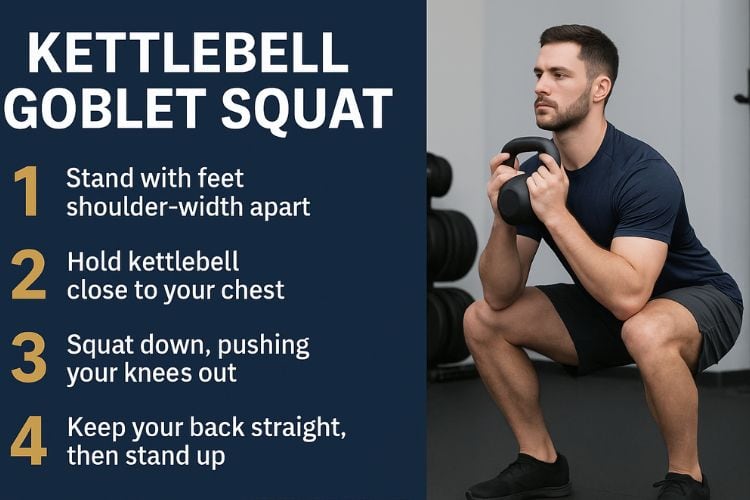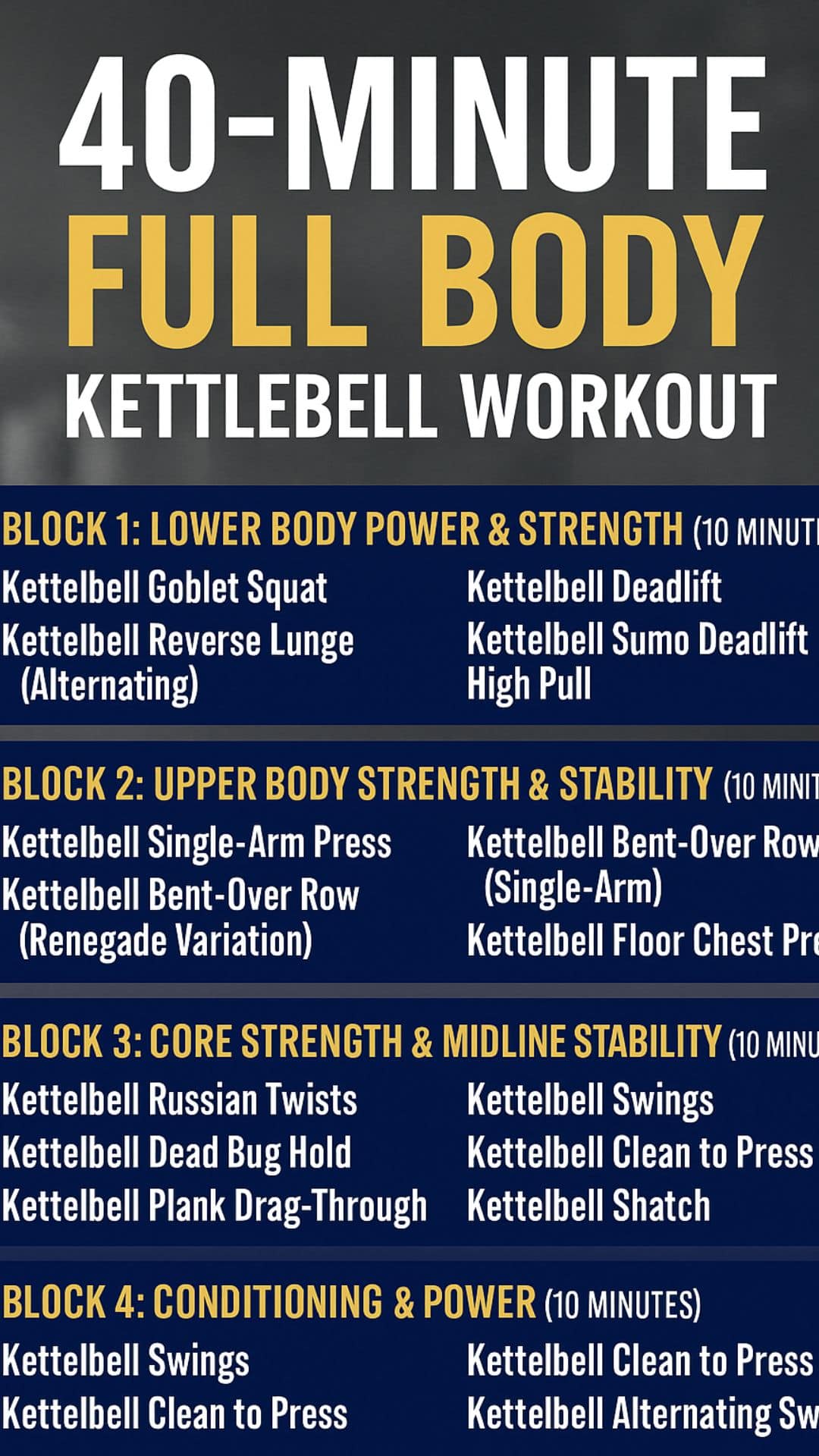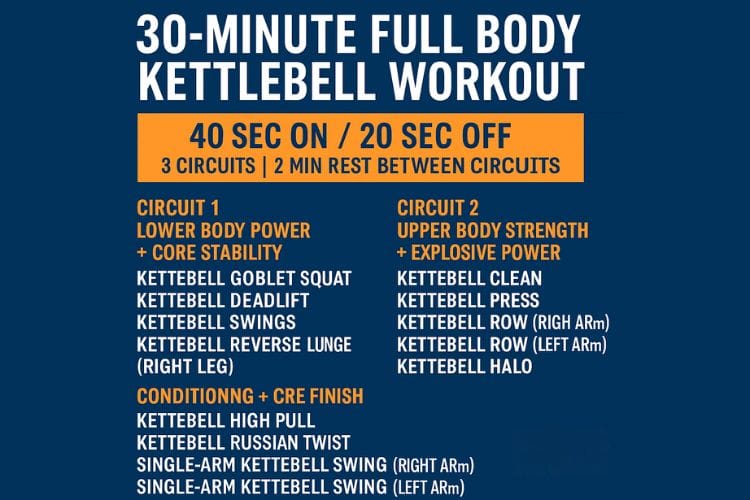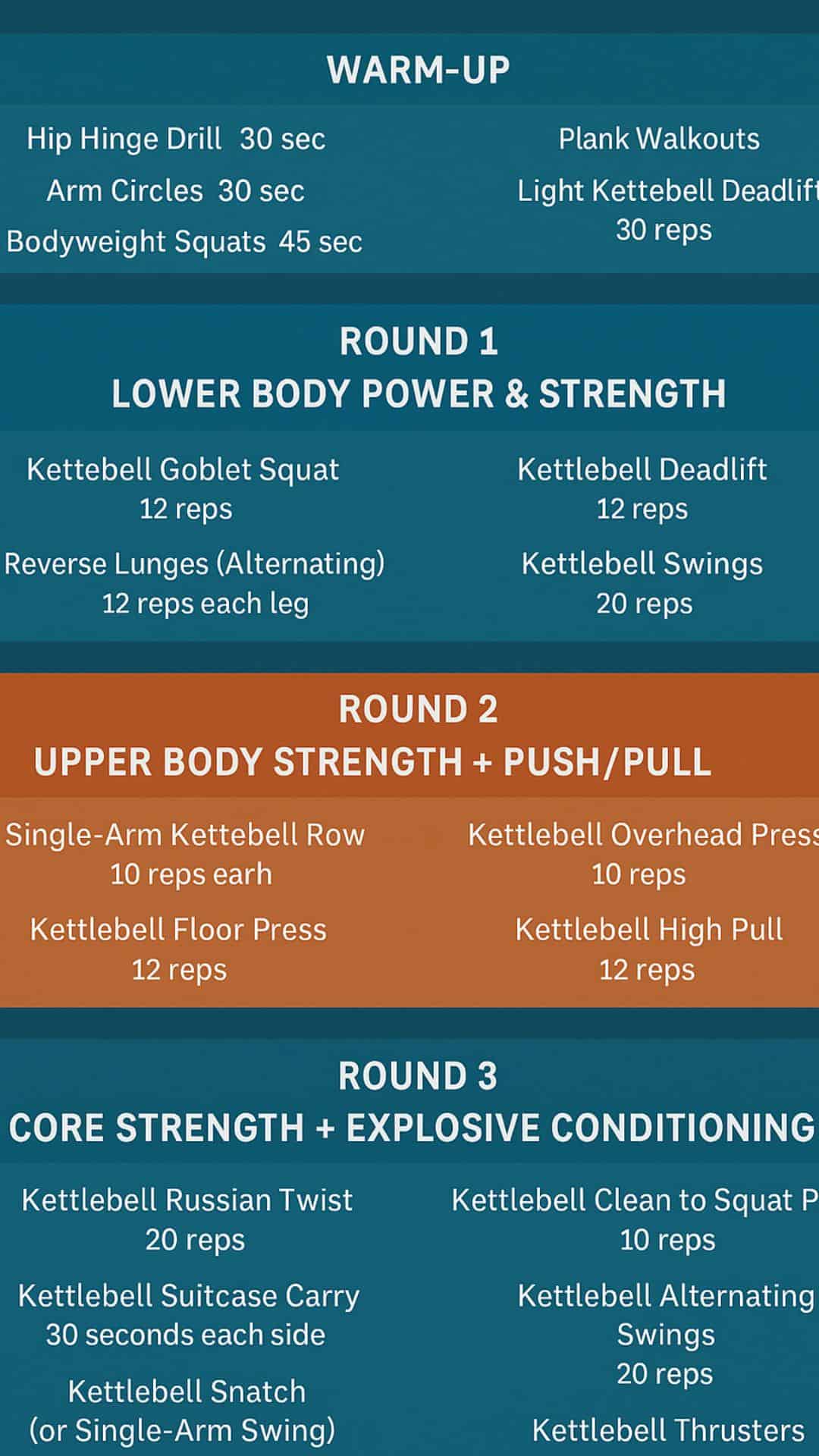
45 Minutes to Fit: A Full-Body Kettlebell Workout for All Levels

40-Minute Full-Body Kettlebell Workout (Build Muscle, Burn Fat)

30-Minute Kettlebell Workout for Total-Body Strength

25-Minute Full Body Kettlebell Workout for Strength & Fat Loss
Lose Belly Fat With These Practical Diet And Exercises

Belly fat isn’t just a nuisance that makes your clothes feel tight; it’s seriously harmful. This type of fat, referred to as visceral fat, is a major risk factor for type 2 diabetes, heart disease, and other conditions. Many health organizations use body mass index (BMI) to classify weight and predict the risk of metabolic disease. However, this is misleading, as people with excess belly fat are at an increased risk even if they look thin. So, how can you lose this stubborn belly fat? This blog explores actionable steps to help you on your journey.
The Ultimate Guide to Losing Belly Fat
Understanding Belly Fat
There are two types of fat that are found in our abdominal area: subcutaneous (under the skin) and visceral (around the organs). Visceral fat poses more of a health risk, as it lies deep within the abdominal cavity, surrounding your organs. It’s linked to metabolic disturbances and increased risk of cardiovascular disease and type 2 diabetes.
The causes of excess belly fat are varied but include poor diet, lack of exercise, stress, and genetics. While genetics do play a role in determining where your body stores fat, lifestyle factors are the primary culprits. Unlike other areas of the body, targeting belly fat requires a more holistic approach than just doing abdominal exercises.
Diet Changes for Reducing Belly Fat
A healthy diet is crucial in the fight against belly fat. First and foremost, cutting down on calories is essential. But it’s not just about eating less – it’s about eating right. Here’s what you should focus on:
- Whole Grains, Fruits, and Vegetables: These foods are rich in fiber, which helps keep you feeling full. Also, they are packed with essential nutrients that aid in metabolism and fat loss.
- Lean Proteins: Incorporating lean proteins like chicken, fish, beans, and lentils can help build muscle and boost metabolism.
- Healthy Fats: Not all fats are bad. Monounsaturated fats and omega-3 fatty acids found in avocados, nuts, and certain fish can actually help you lose belly fat.
- Portion Control: Be mindful of portion sizes, and try not to eat directly from large containers or bags.
- Hydration: Drinking plenty of water throughout the day aids in digestion and keeps you from overeating.
Remember, crash diets are not a sustainable solution. Gradual changes in dietary habits lead to lasting weight loss.
Effective Exercises for Belly Fat Reduction
Spot reduction, or losing fat in one area, is a myth. To lose belly fat, you need to reduce overall body fat. This requires a combination of cardiovascular and strength training exercises:
- Cardiovascular Exercises: Activities like brisk walking, running, cycling, and swimming increase your heart rate and burn calories effectively. Aim for at least 150 minutes of moderate-intensity exercise or 75 minutes of high-intensity exercise per week.
- Strength Training: Building muscle helps increase your resting metabolic rate, meaning you burn more calories even when you’re not exercising. Incorporate full-body workouts that target all major muscle groups.
- Core Strengthening: While you can’t spot-reduce belly fat, strengthening your core muscles can help improve your posture and give your abdomen a more toned appearance. Planks, abdominal crunches, and yoga are excellent for building core strength.
The key is consistency. Start with manageable workouts and gradually increase the intensity as your fitness improves.
Lifestyle Adjustments
Losing belly fat isn’t just about diet and exercise; it also involves your overall lifestyle:
- Quality Sleep: Lack of sleep can lead to weight gain, including increased belly fat. Aim for 7-9 hours of quality sleep per night.
- Stress Management: Stress triggers the production of cortisol, a hormone that increases appetite and abdominal fat storage. Find stress-reduction techniques that work for you, such as meditation, deep breathing exercises, or hobbies.
Overcoming Challenges and Staying Motivated
Losing belly fat can be challenging, and it’s common to hit plateaus. Here are some tips to keep you motivated:
- Set Realistic Goals: Instead of aiming to lose a certain amount of weight quickly, focus on gradual, sustainable changes.
- Track Your Progress: Keep a food diary or use a fitness app. Seeing your progress can be a powerful motivator.
- Find a Support System: Whether it’s friends, family, or an online community, having support can make a big difference.
The Science Behind Belly Fat
To effectively battle belly fat, it’s crucial to understand the science behind it. Our bodies store fat when we consume more calories than we burn. These excess calories are converted into triglycerides, which are stored in fat cells throughout the body. Belly fat, particularly the visceral kind, is more than just stored energy. It acts almost like an organ, producing hormones and substances that can affect your health. For instance, it releases fatty acids and inflammatory agents that can increase insulin resistance, laying the groundwork for diabetes and heart disease.
Nutritional Strategies for Targeting Belly Fat
Apart from general dietary guidelines, certain nutritional strategies can be more effective in targeting belly fat:
- Low-Carb Diets: Studies suggest that low-carb diets can be particularly effective in reducing belly fat. These diets not only help in shedding weight but also aid in reducing the dangerous layer of visceral fat.
- Soluble Fiber: Foods high in soluble fiber, such as beans, oats, flaxseeds, and Brussels sprouts, can help reduce visceral fat. Soluble fiber absorbs water and forms a gel that helps slow down food as it passes through your digestive system, leading to reduced hunger and calorie intake.
- Probiotics: These are beneficial bacteria found in certain foods and supplements. They have various health benefits, including improving gut health and enhancing immune function. Some strains of probiotics have been shown to reduce the amount of fat that the body absorbs from food and can fight belly fat.
Exercise Specifics for Belly Fat Loss
While general exercise is beneficial, certain types of exercise can be particularly effective for reducing belly fat:
- High-Intensity Interval Training (HIIT): This form of exercise involves quick and very intense bursts of activity. It can be more effective than other forms of exercise at reducing body fat and belly fat.
- Resistance Training: Lifting weights is important for building and retaining muscle. Higher amounts of muscle will result in a higher metabolism, which is conducive to losing belly fat.
The Role of Hormones in Belly Fat Storage
Hormones play a significant role in determining where fat is stored. For instance, high cortisol levels due to stress can lead to belly fat accumulation. In women, changes in estrogen levels during menopause can cause fat to redistribute from the hips, thighs, and buttocks to the abdomen.
Psychological Aspects of Losing Belly Fat
The journey to lose belly fat is as much psychological as it is physical. Maintaining motivation can be challenging:
- Setting Achievable Goals: Unrealistic goals can lead to disappointment. Set small, achievable targets to keep yourself motivated.
- Positive Self-talk: Encourage yourself with positive affirmations. Negative self-talk can demotivate and lead to emotional eating.
Myths and Facts About Belly Fat Loss
There are many myths surrounding belly fat loss. It’s important to separate fact from fiction:
- Myth: Abdominal exercises alone can reduce belly fat. Fact: While core exercises strengthen abdominal muscles, they don’t specifically burn belly fat.
- Myth: Supplements can melt away belly fat. Fact: No supplement can reduce belly fat without overall weight loss through diet and exercise.
The Role of Genetics in Belly Fat
Genetics can play a role in how and where your body stores fat. However, genetics does not doom you to a fate. With the right lifestyle choices, you can overcome genetic predispositions to belly fat.
Long-Term Strategies for Maintaining a Healthy Waistline
Once you’ve lost belly fat, maintaining a healthy waistline is crucial:
- Regular Physical Activity: Continue with a mix of cardio, strength training, and flexibility exercises.
- Healthy Eating Habits: Stick to a balanced diet and avoid reverting to old eating habits.
- Regular Health Check-ups: Keep track of your health metrics, like cholesterol levels and blood pressure.
Comprehensive Approach
Losing belly fat is a journey that involves a comprehensive approach encompassing diet, exercise, lifestyle, psychological aspects, and workout plan to lose belly fat. Understanding the science behind it, debunking myths, and setting realistic goals are crucial for success. Remember, while the journey can be challenging, the health benefits of reducing belly fat are immense, both physically and mentally. Stay patient, stay motivated, and embrace the journey to a healthier you.
Most Recommended
Subscribe to our Newsletter
Stay up to date on the latest men’s health, fitness and lifestyle trends and tips.
About Us
Men’s Fit Club was started with the goal of empowering men to get the most out of their lives. This meant going beyond exercise and diet tips to really address the broad range of issues that men face on a daily basis – topics like recreation, finding love, sexual health and even sound fashion advice.
Quick Links
© COPYRIGHT MEN'S FIT CLUB 2026. All Rights Reserved

